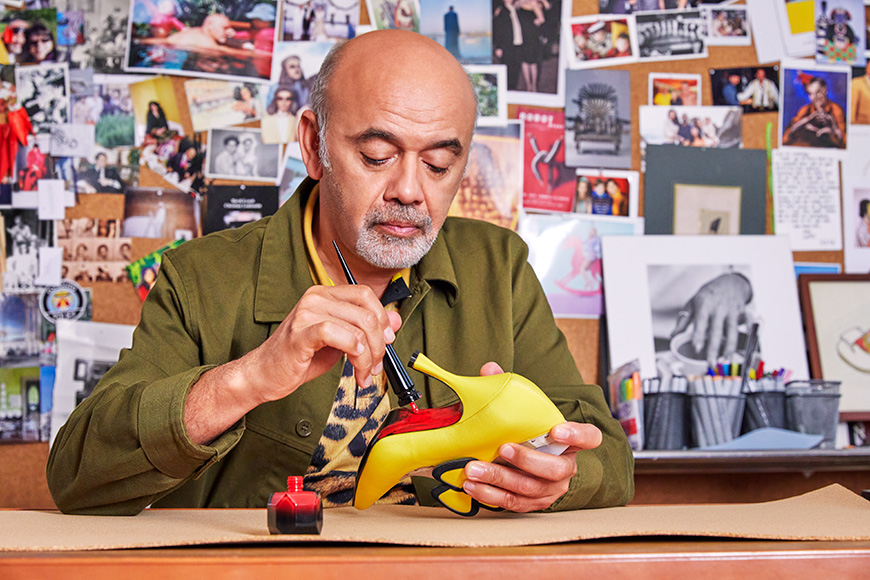In a recent article, we addressed the topic of women’s dance footwear, outlining the fundamental characteristics they must possess to give a pleasant dancing experience, with particular attention to two specific disciplines: Argentine tango and heels dance. But we have not forgotten about the male world, since even men when they practice Latin American dances, Caribbean dances, or even Argentine tango, need appropriate footwear that ensures comfort and practicality.
What do we mean by “Latin American dances”?
Before examining shoes, it is important to discuss these dances to avoid confusion related to their origins. There are Latin American dances officially recognized by the International Latin American Dance Championships, and Caribbean dances, which are a very popular category among those who wish to learn the art of dance. Although the two terms are often used thinking we are talking about a single discipline, in reality the two styles have different characteristics.

Latin American dances are couple dances that gained recognition after World War II. Their history is very complex, marked by significant historical events such as revolutions, wars, and more. What characterizes them in a unique way is the meeting of cultures belonging to very different and distant peoples. This “forced” interaction over time has generated an exchange of cultural elements and popular folklore, culminating in the formation of new elements of contamination from which unique Latin American musical and dance styles have arisen.
Types of Latin American Dances
There are five types of dance, each of which features a wide range of steps that dancers combine in varying ways depending on the competitive context. In Italy, as well as in the rest of the world, these dances are strongly oriented towards competition and over the years they have developed many different styles. Often influenced by Western tastes, many of these styles have departed from fidelity to traditional forms.
Let’s take a look at the origins of each type of Latin American dance
- The Rumba: originally from Cuba like many other Latin American dances, it made its debut in the early 1900s thanks to farmers who, using music as a form of entertainment during work, transformed it into an artistic expression. Because they lacked sophisticated musical instruments, the peasants made do with what nature made available to them, using wood and kitchen utensils. Subsequently, they developed an engaging rhythm based on extremely sensual hip movements and it will be the basis on which the rumba of Latin dances will then be born.
- Cha Cha Cha: Like rumba, this genre of dance also has Cuban origins, spreading to the United States after World War II. However, it has undergone significant transformations from its original form, which was characterized by rapid movements, due to its growing popularity not only in the United States, but also around the world.
To this day, the origin of the name of this dance remains uncertain; some theories suggest that it may derive from an onomatopoeic sound produced by the dancers’ feet that generate a syncopation of 3 beats on the floor, while others speculate that the name may be linked to an instrument of Cuban origin.
- Samba: Characterized by powerful and lyrical tones, it has its roots in the rich Brazilian religious musical tradition. This dance served as both a form of entertainment and an act of devotion to gain divine favor and thank the Gods.
In the context of today’s competitions, samba has undergone a transformation. The pace has been slowed down and highly elaborate choreographed movements have been introduced, making the dance extremely engaging and fascinating to observe. It has been associated with carnival and Rio de Janeiro and since 1920 it has been taught for parades, not only as a couple dance but also individually.
- The Jive: This dance form spread in the 30s of the last century in North America, mainly among African Americans who were experts in the distinctive movements of this engaging couple dance . It represents one of the most dynamic expressions of Latin American culture, with a fast pace consisting of 8 energetic and stylistic passages. Over the course of the evolution of the jazz genre, this dance formed the basis for the development of rock ‘n’ roll.
- Paso Doble: Unlike the others, this one was born in Spain. It is an almost theatrical dance and has a particular theme related to bullfighting: the knight is the bullfighter and the lady corresponds to the drape that attracts the bull’s attention. It is a dance that uses the whole body with rapid movements and, consequently, technically very difficult to learn and perform. Over time, this style of dance incorporated many of the figures originally attributed to Flamenco, such as the tap of the heel at each foot closure, elevating them to distinctive symbols.

Photo credit: Adrian Dascal | Unsplash
And instead, what are Caribbean dances?
How many times have you thought that “salsa” was a Latin American dance? It’s actually a Caribbean dance.
As we have anticipated, Caribbean dances are often confused with Latin American dances due to their seductive and fast rhythm which is often very similar, but there are differences.
Caribbean dances are different from Latin American dances because they have the characteristic of bonding the couple, making them stay in contact and thanks to the rhythm, different from Latin American dances, they are able to make every movement sensual. Among the main ones are bachata, salsa and merengue and over time they have become among the most exciting and trendy dance disciplines. They involve people of all ages, encouraging them to join gyms to learn choreography with group dances; In addition, they are more prevalent than other Latin American dance styles.
Types of Caribbean dances
- Bachata: Originally from the Dominican Republic, it has deep roots in the humblest classes of society. Characterized by a delicate and sensual rhythm, this dance form is a vibrant and passionate expression of love, represented in its many facets. Initially defined as “vulgar” by the bourgeois class, but with the passage of time it has experienced a revolution and a growing appreciation thanks to the change of melody and rhythm, making it become, to date, a form of artistic expression capable of connecting people through the beauty of its movements
- Salsa: it is characterized by the possibility of improvisation, making it a sensual and engaging dance. It develops into various dance styles and is very ingrained in the cultures in which it was born. The one that is known in the West is the show Salsa but there are other styles, such as Cuban Salsa, Venezuelan Style, Colombian Salsa and even the New York Style, danced in the famous nineties film “Dirty Dancing”.
- The Merengue: a folkloric dance, known by many as the national dance of Santo Domingo and its origins are to be found, in fact, in the Dominican Republic. It is said to be one of the oldest dances in the Caribbean, and Africans danced it while working with chains on their feet and yet managed to take sensual steps. In the Tribes it was danced with the woman in the center of a circle who waited for the hat to be thrown to decide whether to dance with her suitor. So, in the past but, even today, it is a dance that is connected to courtship, which is why it is represented by free interpretation and very simple to dance.
As you can see, the two dances are very different, on the one hand we find technique and passion, while on the other hand freedom, sensual transport and rhythm.
Addressing the issue of men’s clothing to practice these dances, it is important to note that each style requires appropriate attire. Footwear plays a crucial role, as a dancer’s feet must always be comfortable and protected. In general, for men, whether for Latin American dances or for Caribbean dances or even for tango, they must have two main characteristics: they must be light, flexible and fit like a glove, so as to allow the dancer to maintain full control of movements and offer maximum comfort even during long hours of dancing. But let’s take a closer look at the perfect shoe for men.
Shoes for Latin American and Caribbean dances
One of the most fundamental things when choosing a shoe for this type of dance is that they should be neither too tight nor too loose, but suitable for the shape of the foot. As for the heel, Latin American needs a higher heel, they generally have a height of 3 or 4 cm, compared to Caribbean dances that require a lower heel. But if you’re just starting out, the lower heel is also recommended for Latin Americans, while more experienced dancers can opt for higher-heeled footwear right away.

Photo credit: Romydance webshop
And the sole?
The sole of the shoes plays an important role because it helps to perform precise movements without compromising stability. It can be made of different materials such as leather, suede or rubber, depending on your preferences and the type of floor of the dance floors you frequent.
While the aesthetics of dance shoes are important, especially for experienced dancers who wear costumes for Latin American performances or competitions, it is crucial not to neglect comfort. Practicality and fit must be a priority to ensure optimal performance during the dance, without sacrificing the well-being of the foot.
Latin American dances require elegant leather footwear, usually painted black. On the contrary, disciplines such as the Caribbean offer more freedom in the customization of dance shoes for men, allowing for colors and decorative details.

Photo credit: Italiatrend webshop
It is also essential that the materials used are soft, enveloping, durable and breathable. These footwear must accompany the movements of the foot without constricting it, while ensuring optimal stability. It is important to remember that the man is the guide of the movement in the couple, always serving as a reference point for the beginning and safety in every step.
A step back..
But, let’s take a step back because, in the previous article we talked about women’s footwear for Argentine tango, so let’s conclude by also presenting the shoes that men must use for this type of dance. The choice of his shoes is also essential to ensure an impeccable performance in the practice of this discipline.
As with women’s shoes, the choice of sole is also very important for men‘s shoes. It must be durable and rigid, especially in the arch area. Some models may also include metal reinforcements to offer extra support and improve sensitivity to the floor, allowing for precise and controlled strides.
The heel is also very important, which must be within a height ranging from 3 to 5 cm. The choice depends on personal preference and dancing style, but the higher heel offers greater stability allowing for more elegant movements.
In addition, the choice of tango shoes for men must also take into account the style of the shoe because depending on the type of design chosen, a different style is given: the most classic designs are characterized by clean lines and materials such as leather and give a more traditional style, while sports tango shoes, With lightweight and breathable materials, they are ideal for those who prefer a more modern and informal style as well as greater comfort during the most intense dance hours.

Photo credit: Tangolerashoes webshop
Today we have seen together the difference between Latin American dances and Caribbean dances. Were you already aware of these differences?
We had fun looking at the essential features of men’s shoes. If you’re interested in learning more about Argentine tango and ideal footwear for women, you’ll find more details in the article here.
In the next article we will move into a different scenario, moving from dance to theater, both art forms. We will explore together the recommended shoes for a night at the theater, for both men and women. What do you say?
We recommend that you don’t miss it!
You may also be interested in the following articles:

Best of the year 2023: Footwear trends, from iconic comebacks to quirky creations
A journey into the eccentricity of footwear that marked the year in fashion

The Mary Jane: from comic books to catwalks, the most desired shoes of every season!
We explore the history, evolution and trends of these iconic footwear

Christian Louboutin: The Evolution from Iconic Red Soles to Luxury Sneaker Innovation
Exploring the Legacy of a Fashion Icon and the Louboutin Astroloubi Sneaker Phenomenon












































